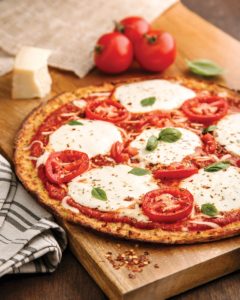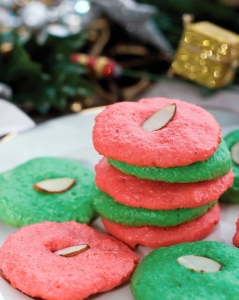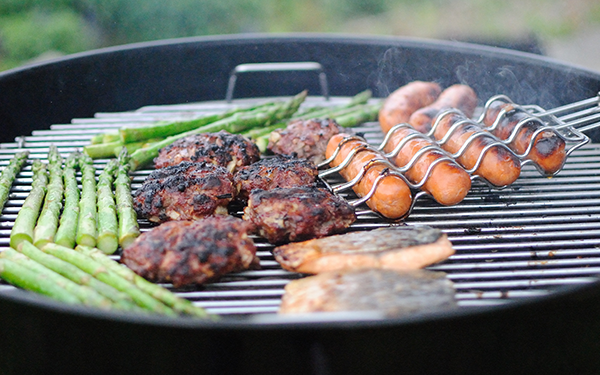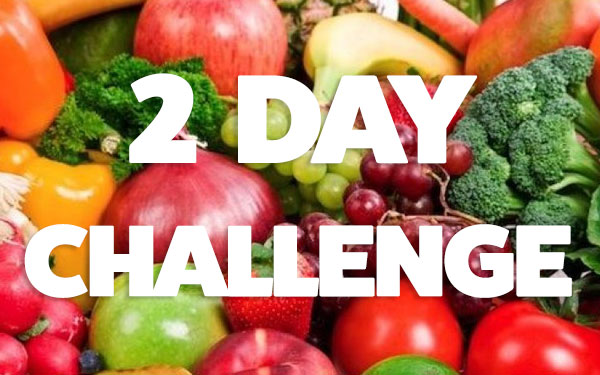You’ve probably heard of several low-carb plans over the years, such as Atkins or Paleo. The options can be a bit overwhelming at first; however, most of these plans share at least one basic principle: eating natural foods that are not processed. Because of this, I have chosen to write all my recipes using only fresh “real” foods that are a good choice for nearly any low-carb way of life.
It should be noted though that I don’t particularly endorse any specific plan. My family started out on Atkins and found out what worked for us as we went along. We never followed any strict set of rules, and likely broke many rules of The Atkins Diet along the way. You can’t always reference a 500-page book before you make dinner, nor can you be expected to retain every nuance written out.
The fundamentals of low-carb have been proven to work and they’ll always work, whether you are following a popular plan or not. As long as you are eating low-carbohydrate foods that are not processed, you should be on the right track. To go one step further, you’ll have even more success if you make sure that you are eating a good amount of protein and fiber with every meal, as these things slow digestion and keep you feeling full and satisfied. The good news is that most naturally low-carb foods just so happen to contain a good amount of protein and fiber.
In this column, I’ll give a brief overview of the biggest differences (and similarities) between the most popular low-carb plans. Whether you want to delve deeper into a specific plan—or simply carve your own path as my family did—is up to you.
THE ATKINS DIET
Atkins is a name that has become synonymous with low-carb (in the way that I hope Stella has become synonymous with low-carb recipes). People like to look for the big NEW thing, but The Atkins Diet has worked for countless people and continues to work decades later.
Atkins is all about phases. Phase 1 is known as “Induction” where you are supposed to eat under 20 grams of carbs a day for 2 weeks, focusing on high-fat and high-protein foods. This kickstarts weight loss.
Phase 2 is the “Balancing” phase where you add more types of foods to your diet that are slightly higher in carbs but still natural, and pretty low in the scheme of things. These are foods like fresh berries, carrots, or sweet potatoes (in moderation). This phase is for continued weight loss.
Phases 3 and 4 are about moving your body into maintenance once you’ve lost the weight.
STELLA STYLE
Stella Style is the name that we gave to our way of eating. I don’t like to call it a plan, and don’t use the term as much anymore to lessen any confusion as to whether it is a plan. It was always my goal that my readers would find what works for them and develop their own “Style,” naming it for themselves, to take ownership over their own accomplishments.
If I ever had any rule, it was (and still is), to shop the outer aisles of your grocery store to focus on buying fresh foods.
As my family started on Atkins, Stella Style is closest to Atkins, though we don’t like to put an emphasis on counting carbs. As most of my recipes fall somewhere between the “Induction” and “Balancing” (both weight loss) phases of Atkins, we’ve never seen a reason to count carbs. We are eating the right foods at all times, and that is all that matters.
KETOGENIC
Ketogenic is a newly popular term in the low-carb world. Also known as The Keto Diet, these terms are quickly becoming just a new, fancier way, to say “low-carb.”
Ketogenic is simply about eating to keep your body in ketosis, burning fat instead of carbohydrates for energy. It’s important to keep in mind that that is the goal of all low-carb diets.
As Ketogenic is not as defined as many other plans, you’ll find differences in the “plan” from source to source. Many people (not all) who use the term believe in a very high ratio of fat in foods—literally 70% healthy fats for all foods that you consume. Low-carb diets tend to be high in fat (which is not a bad thing, as it is then burned for energy), but I’ve never needed to add fat to my diet to keep my body in ketosis.
Typically, Ketogenic plans suggest 20 net carbs a day, much like the Induction phase of Atkins.
PALEO
Paleo is the least like the other options listed in this column, as it has several more rules. To be honest, it has a lot of rules.
As you may have heard, Paleo is about eating as the cavemen ate, back before we had refined and processed foods. This is why it is a naturally low-carb diet. However, there are further restrictions on foods than most other low-carb diets. On Paleo, you are supposed to also avoid: salt, refined vegetable oil, butter, cream, cheese, and peanuts.
Olive oil can be used in place of butter or vegetable oil. Coconut milk or unsweetened almond milk can be substituted for cream. Other nut butters can be substituted for peanut butter. Finally, salt and cheese can often be omitted entirely.
That said, these are all foods my family ate while losing weight on low-carb and I don’t personally see a reason to restrict anything that doesn’t affect your health or results.
Keep On Low-Carbin’!
George Stella
For tons more low carb recipes, ideas, and support please visit:
www.StellaStyle.com
www.facebook.com/LowCarbingAmongFriends
 Grain Free Pizza Crust
Grain Free Pizza Crust
You Won’t Believe How It’s Made!
Recipe by George Stella
Prep Time: 20 min | Bake Time: 50 min | Serves: 8
Calories: 70 | Fat: 3.5g | Protein: 6g | Total Carbs: 3g – Fiber: 1.5g = Net Carbs: 1.5g
Do not let the ingredients of this totally grain-free pizza crust scare you away, as the results look and (more importantly) taste spectacular. This may be made from cauliflower, but nobody has to know that and they certainly won’t be able to guess!
Ingredients
- 1 medium head cauliflower, cut into florets
- 2 large eggs, beaten
- 1/2 cup shredded mozzarella cheese
- 1/4 cup grated Parmesan cheese
- 1 teaspoon dried oregano
- 1 teaspoon dried basil
- 1/4 teaspoon garlic powder
- 1/8 teaspoon black pepper
- 1/8 teaspoon onion powder
Instructions
- Preheat oven to 350°F. Line a 10-inch pizza pan with parchment paper.
- Add the cauliflower florets to a food processor and blend until they are a paste-like consistency. You may need to do this in 2 batches.
- Transfer the cauliflower paste to the center of a clean kitchen towel, draw up the ends, and twist the towel to remove any excess water.
- Add the prepared cauliflower paste to a bowl and use a fork to mix in the remaining ingredients, just until well blended.
- Place the mixed dough onto the center of the prepared pan and cover with plastic wrap. Use a rolling pin to evenly spread the dough out, getting as close to the edges as you can. Discard plastic wrap.
- Bake the crust for 45–50 minutes, or until it begins to brown.
- Cooking Pizza: Top with your favorite toppings and bake again at 350°F for 8–10 minutes, just until cheese is melted and toppings are hot.
Helpful Tips
When shopping for pizza sauce to top this crust, always be sure to check the ingredients for corn syrup or any added sugar.
 Holiday Almond Cookies
Holiday Almond Cookies
Recipe by George Stella
Prep Time 15 min | Cook Time 10 min | Serves 12; 2 cookies each
Calories 90 | Fat 7g | Protein 3g | Total Carbs 4g – minus Fiber 1g = Net Carbs 3g
These scrumptiously great morsels remind me of butter cookies and sugar cookies combined! Need I say anything else? Once you try one you will scream for MORE, almost frighteningly loud. They make great Holiday gifts too; that is if they make it out of your kitchen before everybody eats them all!
Ingredients
- 2 large eggs, room temperature
20 drops red or green food coloring (optional) or use yellow for Easter
1 cup sugar substitute
1+1⁄2 cups almond flour, ground from blanched almonds
1⁄8 teaspoon salt (pinch)
1 tablespoon butter softened to room temperature
24 pieces almond slices
Instructions
- Add the eggs to a bowl and whisk until frothy.
- Then add the food coloring and sugar substitute and blend.
- Next add the almond flour, salt and butter and mix well with a wooden spoon.
- Place soft mixture on a 12 inch length sheet of Saran wrap and roll up like a burrito into a log about 8” long and twist the ends of the Saran wrap to close. Refrigerate overnight or freeze for about 1 hour until firm. (You can reshape the log after about 45 minutes of chilling into a more round shape if needed.)
- Preheat oven to 375°F and line a sheet pan with parchment paper or a silicone mat.
- Remove log from refrigerator or freezer and unwrap the Saran wrap. The dough will be very sticky so be sure to use a thin, sharp knife and work quickly to slice the dough into 24 even pieces with a constant back and forth slicing motion and place them evenly spaced on a sheet pan. (If they get out of shape just press them back into shape on the cookie sheet with your fingers.)
- Top each raw cookie with a single almond slice, pressing it down about half way with your finger to make it stick and bake for 10 minutes until golden brown. Cool and serve or store on the counter in a covered container for up to 3 days.
Helpful Tips
Be sure to bring a batch of these with you to all of your family gatherings this Holiday season so you’ll be sure to have a treat of your own. Fill up an old Christmas tin or jar and give these as a gift!







Leave A Comment
You must be logged in to post a comment.